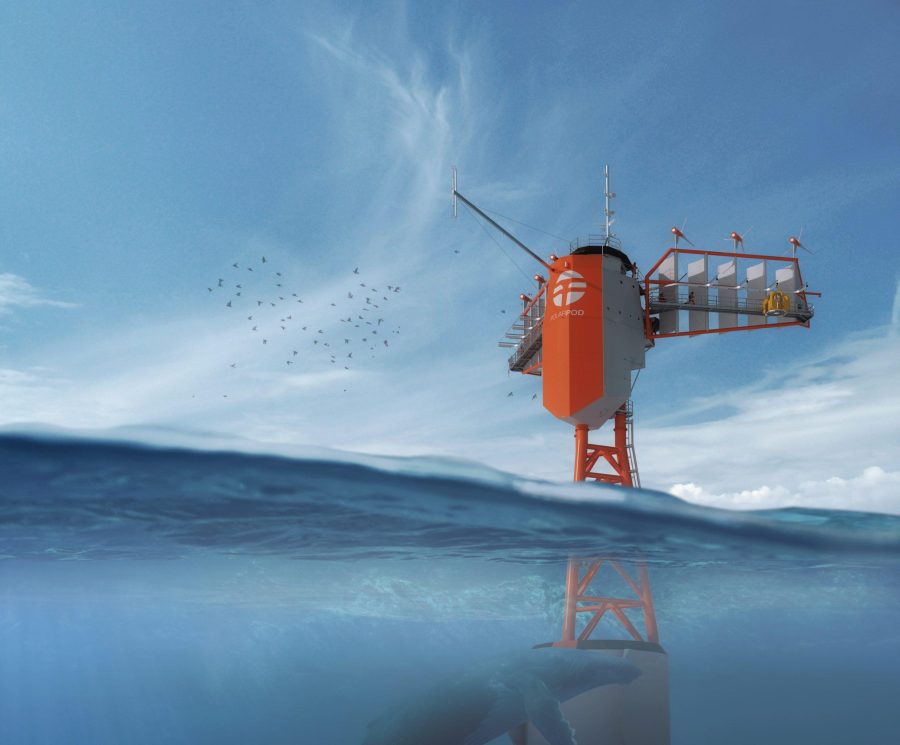If Antarctica is a place of mystery, its surrounding Southern Ocean is not much better understood. What we do know is that these southernmost waters of the world ocean appear to be absorbing more carbon than they release – making the Southern Ocean the Earth’s main carbon sink. Yet, to date, these waters have neither been properly explored nor researched.
This is about to change with the deployment of the Polar Pod, an oceanographic research station in the form of a ‘vertical ship’, which will gather data related to the Southern Ocean’s interactions with the atmosphere, current dynamics and biodiversity. The Polar Pod was developed as part of an initiative led by France’s National Centre for Scientific Research (CNRS), National Centre for Space Studies (CNES) and Research Institute for Exploitation of the Sea (Ifremer), with the goal of sharing this captured data with the global scientific community.
In 2016, Ifremer was appointed the authority in charge of the Polar Pod’s construction. The institute subsequently worked alongside fellow French marine engineering firm Ship-ST and explorer and scientist Jean-Louis Etienne, who drew up the Polar Pod’s design. Meanwhile, CNRS led development of the scientific programme and selected the instrumentation that will be integrated into the Polar Pod.
French yard Piriou is now building the Polar Pod’s main deck at its facility in Brittany, while partner 3C Metal will construct the station’s truss, torus and bottom box in Cape Town, South Africa. Classification will be arranged by Bureau Veritas. If all goes to plan, the Polar Pod will commence operations in the Southern Ocean from 2024-2026, with no scheduled return to shore within this period.
The Polar Pod’s design is not entirely unprecedented. Etienne took inspiration from FLIP, the open ocean research platform owned by the US Office of Naval Research and operated by Scripps Institution of Oceanography. Launched in 1962, the 700gt FLIP was designed to accommodate five crew and 11 scientists, and has been used to study water temperature, wave height and acoustic signals, to mention just a few applications.
FLIP was built without a propulsion system. On the same principle, the Polar Pod will be towed horizontally to the research zone and tilted vertically by filling ballast tanks with seawater.
This design was selected instead of a more ‘conventional’ ship shape so that the Polar Pod’s complement can work safely and in comfort in the face of the ‘Furious Fifties’ – the gale-force winds that howl through the southerly latitudes. “One needs a ship with a strong draught, caught in deep stable waters, and a small surface at the impact of the waves,” says Ifremer. “The architecture is designed not to resonate with the swell: its period of heaving, from bottom to top, is 60 seconds, while the swell of the great South is close to 20 seconds.”
Stability-wise, the Polar Pod is designed for 5° heel in the Southern Ocean’s harsh conditions, plus “a vertical movement that does not exceed 10% of the height of the waves”, Ifremer adds.
The Polar Pod measures just over 100m in height; has a 75m draught, for optimal stability; and weighs 1,000tonnes – which, combined with a tough outer steel shell, should enable it to withstand violent storms. Ifremer continues: “The legs of the lattice are made of steel, from 1.5-2″ [38-50mm] thick, and the bottom ballast weighs 150tonnes.”
Once deployed, the Polar Pod will be carried away by the Antarctic Circumpolar Current, and will circle the Earth between 50° and 55° S, circumnavigating 24,000km at an average speed of 1knot on its two-year journey. Additionally, the Polar Pod is equipped with a transverse propeller, 10m below the waterline, as well as steerable sales, enabling the crew to manoeuvre away from icebergs.
The Polar Pod will harvest wind energy from six Kingspan turbines, each rated 3.2kW, complemented by solar panels. This combined green energy will then be stored in twin 50kWh lithium-ion battery packs and used to power the Pod’s scientific equipment, onboard lighting, IT/comms systems, water desalination plant and onboard heating.






